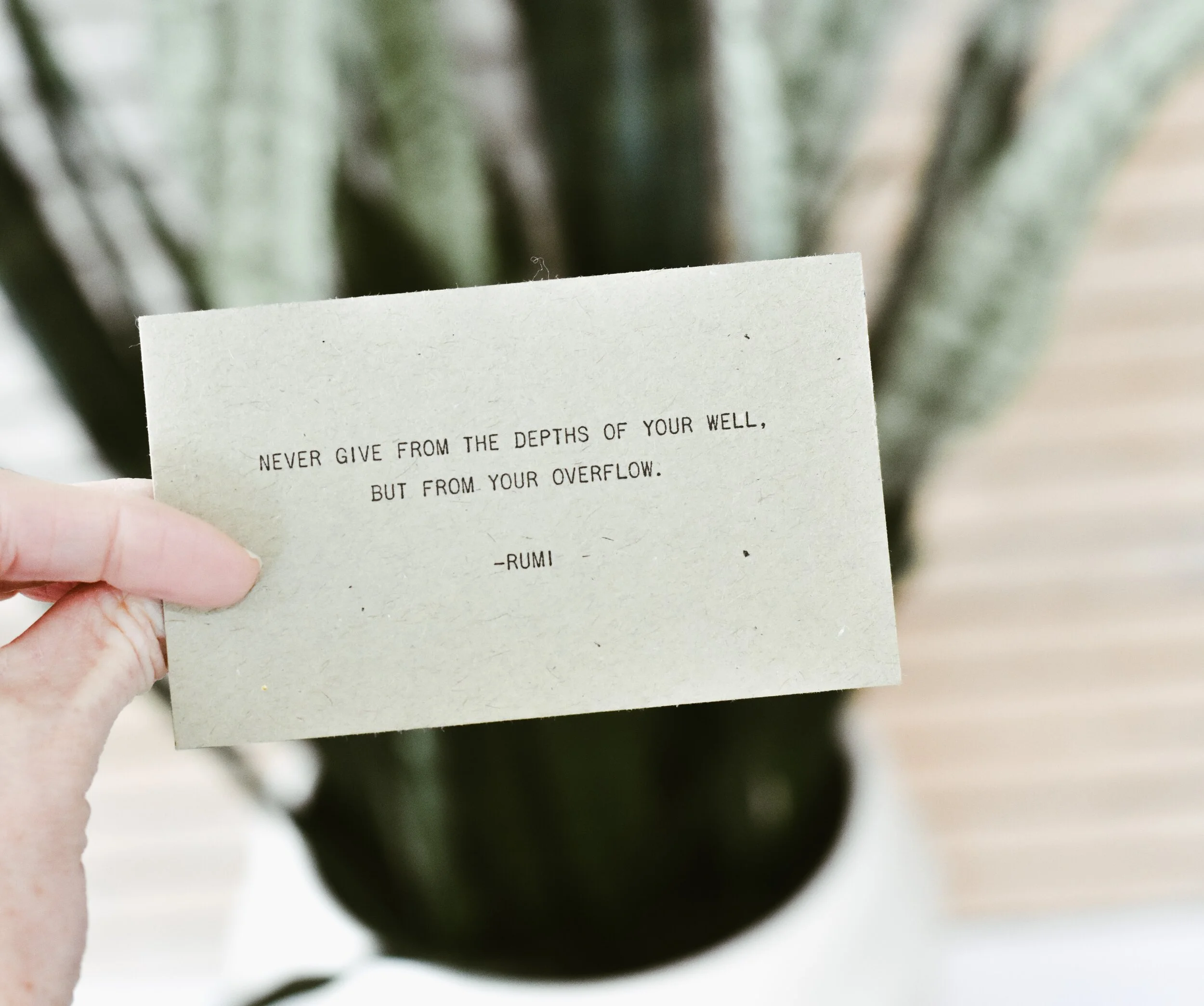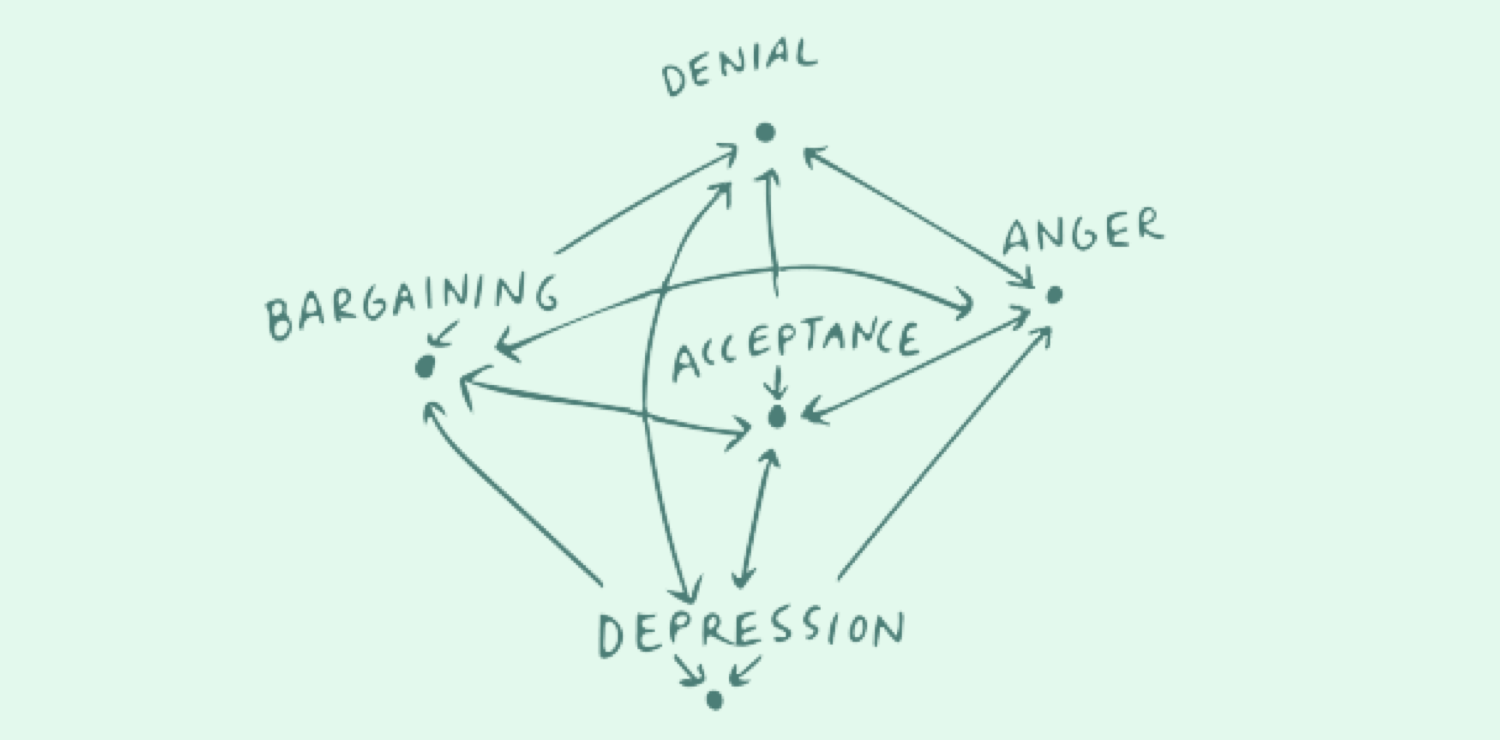6 apps for meditation
Meditation has plentiful benefits, including stress and anxiety reduction, improved sleep and memory, and even improved blood pressure. It’s also a helpful tool in grief to practice calm and presence. There are lots of resources out there to help with starting a meditation practice, but technology has made it even easier to take those resources on the go.
Meditation has plentiful benefits, including stress and anxiety reduction, improved sleep and memory, and even improved blood pressure. It’s also a helpful tool in grief to practice calm and presence. There are lots of resources out there to help with starting a meditation practice, but technology has made it even easier to take those resources on the go. Here are five mobile apps that can help you establish or deepen your meditation work. If you’ve tried any of them or if you have other favorites, respond in the comments!
Headspace
Headspace is a popular mobile app with many guided meditations across a variety of topics grouped into courses - they even have a section of meditations specifically for grief. The techniques in the app are rooted in both the Burmese and Tibetan Buddhist traditions. App is $69.99 per year but a 14-day free trial is available for new users.
Insight Timer
The Insight Timer app is a free meditation app, which makes it a popular choice. They have thousands of meditations in the app today but add new meditations to the daily, ranging from help with sleep to self-compassion to focus and concentration. A premium subscription costing $59.99 per year can be added on to unlock features like downloads and higher quality audio, but otherwise it’s all free.
Calm
The Calm app has a collection of guided meditations to get you started, but they also have a calm music and sound section where you can listen to the sounds of a thunderstorm or a river in the woods. They’ve started a series called Sleep Stories, where celebrity voices read bedtime stories to help you drift off. There’s even one called Happy Little Zzzs with Bob Ross, where you can let the soothing brush strokes and voice of Bob Ross lull you into a slumber. Calm’s subscription cost is $69.99 per year or $14.99 per month.
Simple Habit
Simple Habit is geared around shorter sessions (five minutes) to help users fit meditation into their schedules, but there are also longer sessions available grouped into themes like focus, well-being, and relax. Simple Habit offers many of its sessions for free, but to download sessions and access the full library of meditations costs $89.99 per year or $11.99 per month.
10% Happier
This app was created by Dan Harris, the journalist who also authored the book 10% Happier. The 10% Happier app offers an intro course and a few featured meditations. One is called Ten Good Breaths, which highlights a super-approachable meditation technique. There’s also an ability to have a conversation with an experienced meditator if you have questions. Annual membership costs $99.99 after a seven-day free trial.
Samsara
If you prefer not to be guided and prefer something minimal, Samsara Timer is a perfect choice. It’s an adjustable timer with a calming, resonant bell sound to signal that time’s up. It also keeps track of your days and overall time spent meditating. One downside is that the minimal interface makes it a little tricky to adjust the timer, but you get the hang of it after a few tries. Total cost is $6.99 (single purchase).
6 ways to practice self care
Taking care of ourselves is important, especially when we’re dealing with loss. We all have things going on in our lives, and often we don’t make our mental health a priority.
Photo: Allie Smith
Taking care of ourselves is important, especially when we’re dealing with loss. We all have things going on in our lives, and often we don’t make our mental health a priority.
We’re too busy.
We feel guilty.
We’re afraid of feeling all the things.
As much as we wish it would, pain and stress don’t just go away on their own. And when we neglect what’s going on inside, it often builds until we’ve worn ourselves down so much that we can’t function at all: suddenly we’re crying over the sink or coming down with a cold or quietly letting our bedsheets swallow us whole like water in a lake. I’m sure you’ve heard the phrase You can’t pour from an empty cup. When we try to give the world all that’s expected of us but we’re in the throes of grief, sadness, anxiety, or stress, we simply can’t show up. So we have to work on filling that cup. That’s where self care comes in.
Self care comes in many forms. Some corners of the internet would have you believe that you need to buy things in order to take care of yourself, but the only thing you need to buy yourself is time. And with the beginning of a new year upon us, there’s no better time. Here are some ideas to get you started.
Take a bath. This is one of my personal favorites. It provides some time to quiet your mind and relax while also soothing your muscles, which can often bear the brunt of our stress. Sometimes I play music or a calming podcast in the background (I’m really into this one right now). If you want to get fancy, you can add some epsom salt and essential oils to the tub. A few drops of lavender or rose oil are great options for relaxation and calm.
Get outside. Fresh air can do wonders for a person. It’s easy to feel helpless when you’re stuck inside, and getting out into nature helps us remember that there’s a bigger world out there. Recently, articles have been popping up about “Forest Bathing,” which is the proven-to-be-effective idea of combining exercise and the outdoors to reduce stress and improve your overall health and wellbeing. If you don’t have access to a forest, that’s okay! Even just a 15-minute walk around the block can lower your blood pressure and provide you with mood-boosting endorphins.
Meditate. Meditation, even for 10 minutes, has been proven to reduce stress and anxiety. The idea of sitting still with your thoughts for that long might sound insurmountable when you’re really going through something, but I honestly can’t advocate for it enough (more on this topic in another post). If you’re new to meditation, don’t feel intimidated. Dan Harris, author of 10% Happier, put it best: “Meditation is not about feeling a certain way. It’s about feeling the way you feel.” And for the less confident practitioners, there are now a number of apps featuring guided meditations to help you through (Calm and Headspace are a few I like). Start with smaller increments of time—even two minutes—and work your way up to 10 or more.
Call a friend. Too often when we feel sad or anxious, we try to cope on our own. We tell ourselves that we don’t want to burden anyone. We feel like we should be able to just “handle it.” Once, when I explained to a colleague how I was feeling guilty for relying so heavily on my friends during my own time of need, she matter-of-factly said, “But they get something out of it, too. They get to be there for you.” It seemed so novel to me at the time, but it’s so true. Now, having been on the other side, I’m grateful when I feel like I’m able to offer support to friends. So go ahead—pick up the phone.
Journal. When it feels like there’s a lot going on in your mind, it can help to write it down. Journaling doesn’t have to be all Dear Diary if that’s not your thing. It can come in many forms, from list-writing to web-making to freeform narrative—choose whatever works best for you. Documenting your thoughts, including your concerns and fears, is a helpful practice to combat feelings of overwhelm. When you see everything on paper, it can help you take a step back and feel more in control. It can also help you recognize patterns and identify opportunities to make changes.
Laugh. Sometimes you might just a break from feeling your feelings, and that’s totally okay. Self care isn’t all introspection and bubble baths—it’s also about doing things that bring you joy. Laughter relieves stress, decreases stress hormones, and boosts your endorphins. So give yourself permission to find things that make you laugh, whether that’s a funny show on Netflix (I love Friends or Parks and Recreation), a comedy podcast (my go-to is Mortified, where people read their embarrassing childhood diary entries to a live audience), or an entertaining book (anything by David Sedaris makes me laugh out loud). Once you’ve found your funny material of choice, give yourself permission to really enjoy that time.
There are lots more ways to take care of yourself. How do you do self care?
Holiday traditions after loss
From our gray Seattle home, my fiancé and I spent the morning plotting a day full of festive activities for our upcoming Christmas with my family. We exchanged ideas aloud, each one more ridiculous than the next, and I laughed while alternating between quick sips of coffee and jotting down half-serious notes. It had been his idea months back, his response to my misty-eyed recollection of Christmas mornings growing up with my dad, how it was the one time of year he’d come up for air and be present, calm.
Photo: Chad Madden
From our gray Seattle home, my fiancé and I spent the morning plotting a day full of festive activities for our upcoming Christmas with my family. We exchanged ideas aloud, each one more ridiculous than the next, and I laughed while alternating between quick sips of coffee and jotting down half-serious notes. It had been his idea months back, his response to my misty-eyed recollection of Christmas mornings growing up with my dad, how it was the one time of year he’d come up for air and be present, calm. Sometimes my dad was even giddy, watching my brother and I pull from our stockings the biggest surprise gifts–gifts he swore he’d never give us. Those were often followed by an incredulous glance from my mother, who I’m still not convinced was on board with the flip phone stocking of 2003.
So this Christmas, all of our plans and surprises would be a way to revive the serendipity of the holidays in my childhood years, to bring the cheer that my dad used to bring. We spent the rest of the morning making phone calls and shopping online for a few items, comparing costs of twinkling lights and hot cocoa bars and horse-drawn carriage rides. I was elated. I couldn’t remember the last time I felt so excited about Christmas.
It didn’t occur to me until later in the day as I was walking around my house that for the last few years, holiday traditions have mostly been scrubbed of any past traditions and, by extension, any reminder of my dad. We celebrate Christmas day with my grandmother in a completely different house in a different city with new traditions and sometimes new faces. For Christmas eve, my immediate family gets dressed up and goes to a snow-covered inn on the Mississippi for cocktails before heading home to exchange gifts—a tradition established a year after my dad died, when just staying home felt too sad. My mother hasn’t had a Christmas tree in years, ever since she moved out of the house we grew up in. Sure, the razor-thin sugar cookies made famous by my paternal grandmother make an appearance every year. But apart from that, I wondered, what of my dad is left in our traditions?
There’s a part of me, after coming to this realization, that wants to figure out a way to add more of him back into our holidays. And maybe this whole crazy day-long plan we’ve concocted, full of decorations and lights and maybe a confetti canon or two, is the start of that. But at the same time, it feels like another new tradition, even if the spirit of it is inspired by my dad. And then I wonder, what would that even look like? These new traditions were born out of necessity. They distracted us from the void we all felt experiencing the holidays without him. They brought joy when our default setting was sadness. So replacing them with old traditions doesn’t feel right, either. Sure, they felt a bit awkward for the first few years, but now they’re something to look forward to.
So for now, I’m looking forward to bringing some excitement and surprises to my family holiday. Maybe it will become a new tradition, maybe it won’t. But I’ll think about my dad and all the joy he brought us as kids and hope that it’ll bring a little part of him back this year. And who knows, maybe we’ll go a little overboard on the stockings too.
The "five stages": updating the paradigm
The idea of The Five Stages of Grief was initially created by a Swiss psychiatrist named Elisabeth Kübler-Ross, who worked with people facing terminal illnesses. She introduced the model in her book On Death and Dying in 1969, and it gave words and structure to something that was ambiguous at the time. Soon this became adapted as a way of thinking about grief more generally, and it has since become a commonplace belief.
The idea of The Five Stages of Grief was initially created by a Swiss psychiatrist named Elisabeth Kübler-Ross, who worked with people facing terminal illnesses. She introduced the model in her book On Death and Dying in 1969, and it gave words and structure to something that was ambiguous at the time. Soon this became adapted as a way of thinking about grief more generally, and it has since become a commonplace belief.
Here is what we’re taught that grief looks like:
It’s linear. There’s a clear start and an end. You move through each stage in order and once you reach Acceptance, the process is complete. Grief is over, you have accepted the loss, and you’re back to your old self. Never sad again.
If you’ve been through grief, you understand that this isn’t an accurate representation. In reality, it’s nonlinear and you never really stop grieving even if you accept that the loss has occurred. But this linear model is so engrained in our culture that it poses challenges to grievers and those in a griever’s orbit. It’s this flawed understanding of grief that makes people say things like:
“When you’re done grieving…”
“When she’s back to normal…”
“They just have to reach acceptance and move on.”
This perception is harmful to our understanding of the grieving process, and it requires active education to debunk it.
In reality, grief looks a little more like this:
It flows in all directions, and there’s no clear end point. The intensity of your feelings fluctuates. Even if you “reach” some semblance of Acceptance, you may still have moments of Anger or Depression. You may experience all of the stages in one day and the next day move on to one in particular. Sometimes you skip stages. Sometimes you have month-long stretches of one stage. It ebbs and flows and is anything but linear. And especially with a big loss, grief persists in some form throughout the rest of a person’s life.
I think Cheryl Strayed summed this up perfectly in one of her Dear Sugar advice columns, The Black Arc of It, on the topic of the loss of her mother and a friend’s mother, where she describes grief as a lens on her life—it’s there, during events big and small.
“[…] there isn’t one good thing that has happened to either of us that we haven’t experienced through the lens of our grief. I’m not talking about weeping and wailing every day (though sometimes we both did that). I’m talking about what goes on inside, the words unspoken, the shaky quake at the body’s core. There was no mother at our college graduations. There was no mother at our weddings. There was no mother when we sold our first books. There was no mother when our children were born. There was no mother, ever, at any turn for either one of us in our entire adult lives and there never will be.”
Grief is a cycle. It evolves and continuously unfolds, and we understand it more when we reflect back on it. That may not be how we first understood it, but that’s how it is. Once we know that, we can be kinder to people who are grieving, and we can encourage people who are grieving be kinder to themselves.
How have you experienced the “five stages” of grief? What do you think it’s missing?







